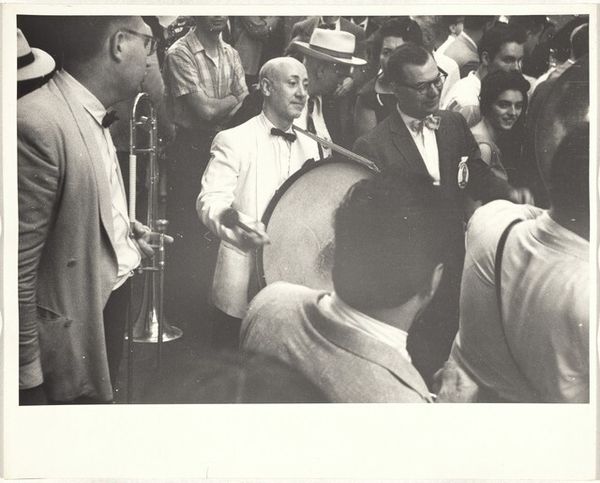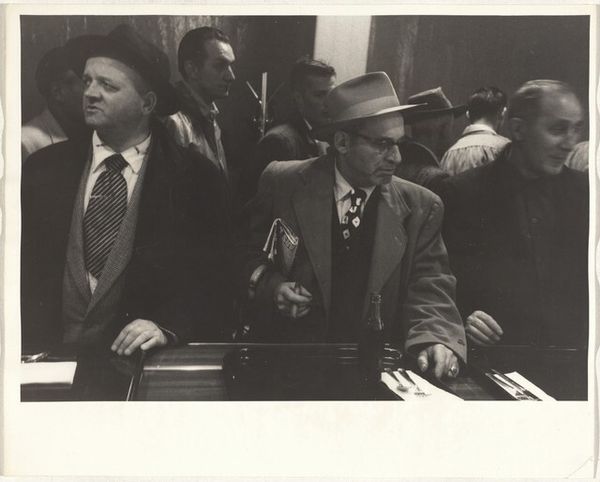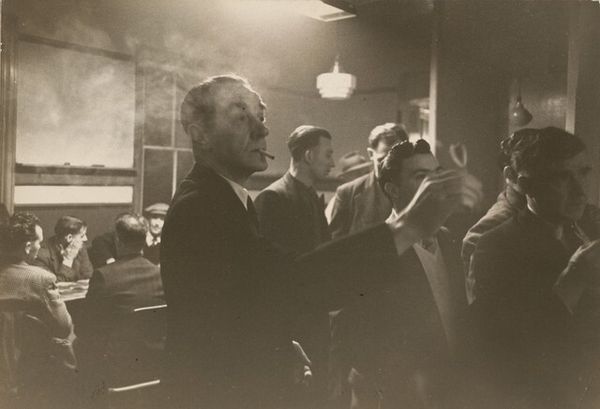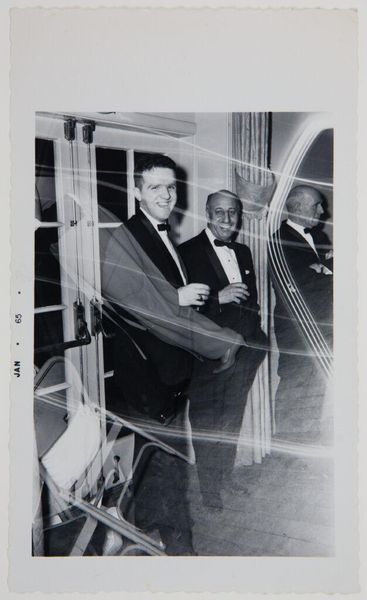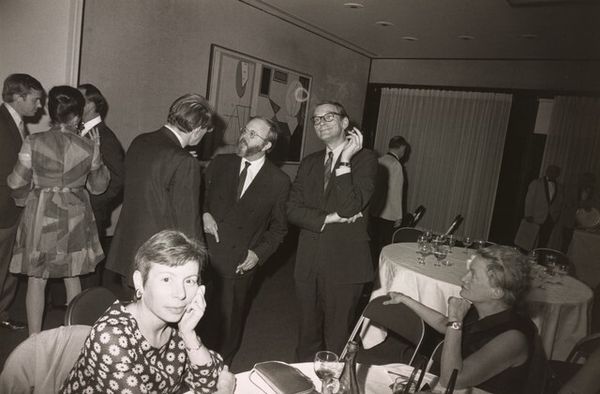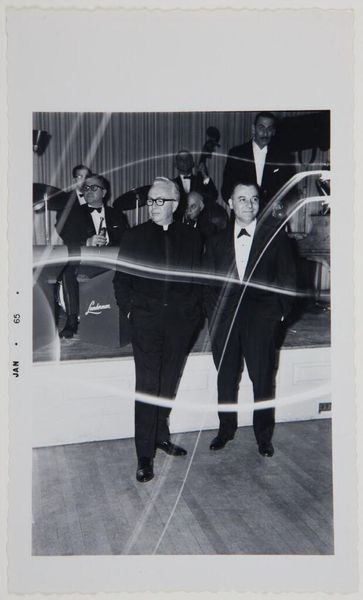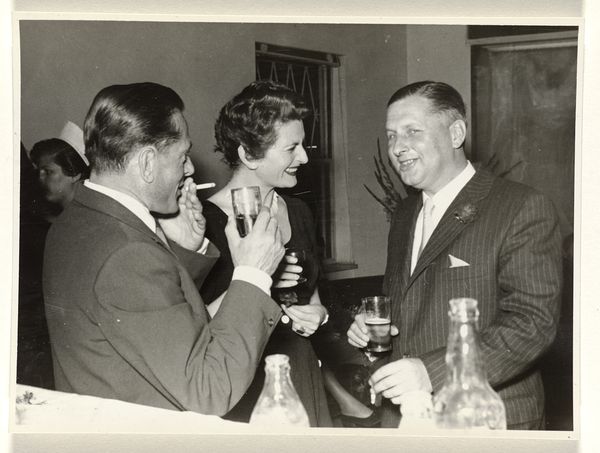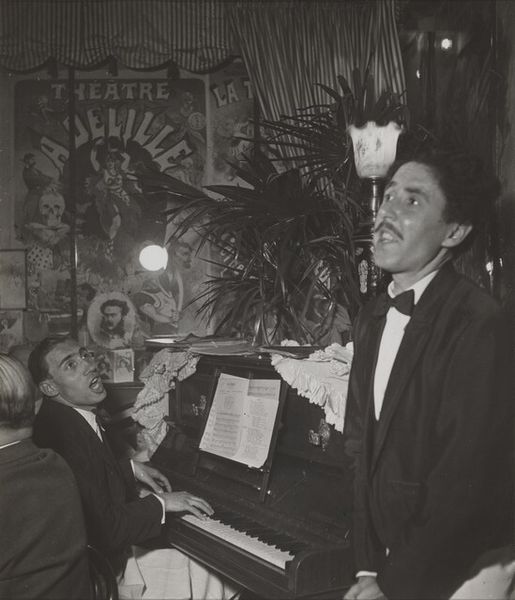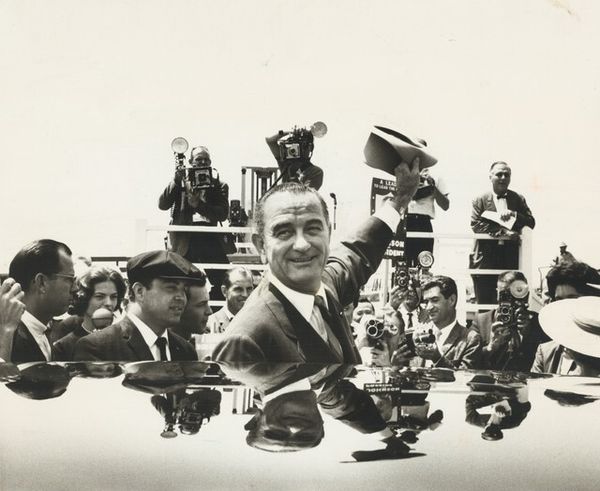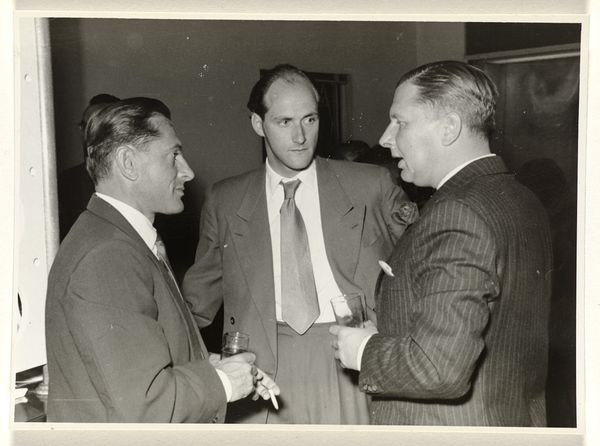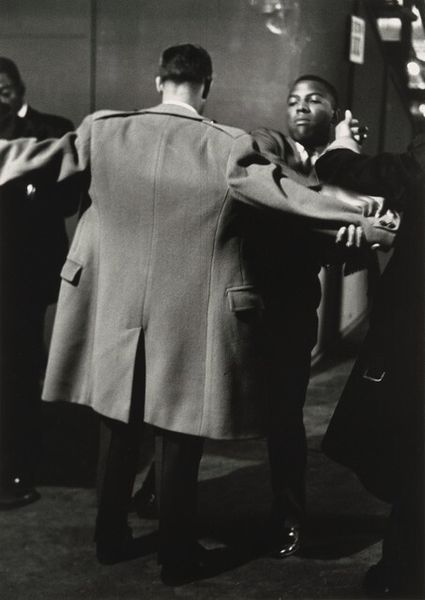
photography, gelatin-silver-print
#
portrait
#
contemporary
#
social-realism
#
photography
#
group-portraits
#
gelatin-silver-print
Dimensions: image: 31.9 × 47.7 cm (12 9/16 × 18 3/4 in.) sheet: 40.5 × 50.6 cm (15 15/16 × 19 15/16 in.)
Copyright: National Gallery of Art: CC0 1.0
Editor: We’re looking at Larry Fink’s "The Metropolitan Museum of Art, New York City" from 1970, a gelatin silver print. The scene depicts a lively party, seemingly capturing a moment of unrestrained celebration. It's almost voyeuristic. What layers am I missing in understanding this image? Curator: The "Metropolitan Museum of Art, New York City" is a key example of Fink’s social realism, highlighting the contrasts and ironies within social spheres. This isn’t just a party; it’s a look at power, class, and social performance within a specific cultural institution. Think about who is invited to such a gala, what that signifies in 1970s New York. Do you think Fink is celebrating or critiquing the elite? Editor: I see your point. It's less about the fun and more about who gets to have the fun. The man with the saxophone almost feels like he’s putting on a performance *for* the viewer as much as he is for the other people at the event. Does the informality clash with what we'd expect from the Met? Curator: Precisely. Fink often played with the staged nature of social events. His confrontational, intimate style—often employing a wide-angle lens and harsh lighting—reveals vulnerabilities and underlying tensions. By positioning the viewer so close to these figures, he collapses the distance between observer and observed, forcing us to question our own role in this social theater. How does this shift your understanding of photography as a medium? Editor: I initially saw a party, but now it’s like… a study of power dynamics, framed by the museum's cultural authority. Photography here isn't just documenting; it's actively engaging in a social critique. Curator: Exactly! And Fink does it with such compelling immediacy. The "decisive moment" is not just an aesthetic capture but a carefully constructed social statement. We learn about photography's function of framing the narrative around people. Editor: So it's less a snapshot, more a calculated commentary. I'll never see party photos the same way again. Curator: And hopefully more aware of the subtle ways institutions shape those "snapshots."
Comments
No comments
Be the first to comment and join the conversation on the ultimate creative platform.
